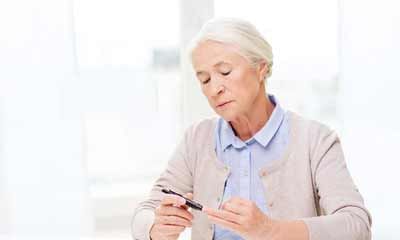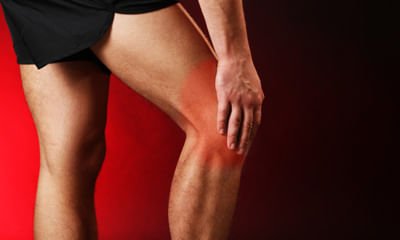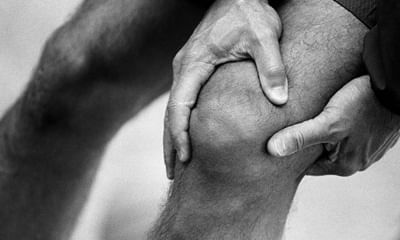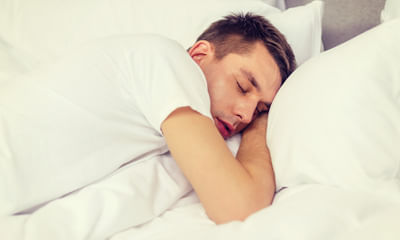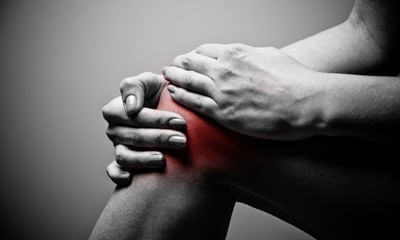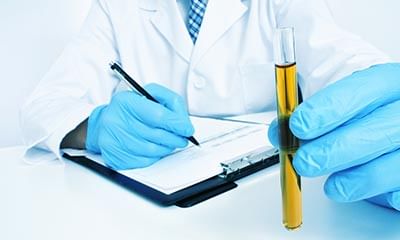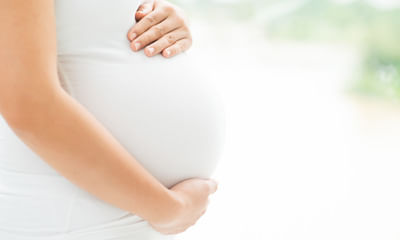Bone Pain Worse At Night
Doctor my mother has osteoarthritis is it curable its in initial stage is it curable and may I know how long it takes to ...
Ask Free Question
Symptoms of arthritis symptoms of osteoarthritis may include joint pain and progressive stiffness that develops gradually. Symptoms of may include painful swelling, inflammation, and stiffness in the fingers, arms, legs, and wrists occurring in the same joints on both sides of the body, especially upon waking up in the morning. Knee arthritis can be painful and debilitating. For osteoarthritis (oa) of the knee, self-care early on can often help significantly. It is important to stretch and strengthen the surrounding leg muscles to provide more support and reduce stresses around the joint. The following best bet exercises will help you get started on your path to feeling stronger, more flexible and more active. Remember: exercise should not be painful – if you experience pain, discontinue and consult with your physician. Advice: 1.must take adequate rest 2.apply hot water with mild heat with cotton towel 3.avoid cross leg sitting and long time standing 4. Put the small size chair under the ankle during sitting in the chair for leg elevation 5.do the exercise given below 2 times per day 1.quadriceps setting exercise helps to strengthen the quadriceps muscle (the big muscle on the front of the thigh), an important stabilizer of the knee. Lie on your back with the leg you want to exercise straight. Place a small rolled towel underneath the knee. Slowly tighten the muscle on top of the thigh (quadriceps) and push the back of the knee down into the rolled towel. Hold contraction for 5 seconds and then slowly release, resting 5 seconds between each contraction. Perform 3 sets of 10 repetitions, 1 time daily. 2.straight leg raise also helps to strengthen the quadriceps muscle. Lie on your back with the leg you want to exercise straight. The other knee should be bent to support your lower back. Tighten the muscle on the top of your thigh and lift to the level of your other knee. Slowly lower. Perform 3 sets of 10 repetitions, 1 time daily. Knee pain •patellar tendinitis: •risk factor •a combination of factors may contribute to the development of patellar tendinitis, including: •physical activity. •running and jumping are most commonly associated with patellar tendinitis. Sudden increases in how hard or how often you engage in the activity also add stress to the tendon, as can changing your running shoes. •tight leg muscles. Tight thigh muscles (quadriceps) and hamstrings, which run up the back of your thighs, can increase strain on your patellar tendon. •muscular imbalance. •if some muscles in your legs are much stronger than others, the stronger muscles could pull harder on your patellar tendon. This uneven pull could cause tendinitis. •chronic illness. •some illnesses disrupt blood flow to the knee, which weakens the tendon. Examples include kidney failure, autoimmune diseases such as lupus or rheumatoid arthritis and metabolic diseases such as diabetes. •complications •if you try to work through your pain, ignoring your body's warning signs, you could cause increasingly larger tears in the patellar tendon. Knee pain and reduced function can persist if you don't tend to the problem, and you may progress to the more serious patellar tendinopathy. •prevention •to reduce your risk of developing patellar tendinitis, take these steps: •don't play through pain. As soon as you notice exercise-related knee pain, ice the area and rest. Until your knee is pain-free, avoid activities that put stress on your patellar tendon. •strengthen your muscles. Strong thigh muscles are better able to handle the stresses that can cause patellar tendinitis. Eccentric exercises, which involve lowering your leg very slowly after extending your knee, are particularly helpful. •improve your technique. To be sure you're using your body correctly, consider taking lessons or getting professional instructions when starting a new sport or using exercise equipment. •therapy •a variety of physical therapy techniques can help reduce the symptoms associated with patellar tendinitis, including: •patellar tendon strap. A strap that applies pressure to your patellar tendon can help to distribute force away from the tendon and direct it through the strap instead. This may help relieve pain. •iontophoresis. This therapy involves spreading a corticosteroid medicine on your skin and then using a device that delivers a low electrical charge to push the medication through your skin. •platelet-rich plasma injection. This type of injection has been tried in some people with chronic patellar tendon problems. Studies are ongoing. It is hoped the injections might promote new tissue formation and help heal tendon damage. •probably your stamina would've gone down due to over use of the joints and the metabolic activity is more due to running. You need to consume good protein diet so that your body will act as a reservoir. It will help you to fight against rather than affecting one particular area of your body for eg. Knee joint. For knee ligament pain or inflammation you need to keep ice which will help you to prevent the inflammation progressing further. •patellofemoral pain syndrome •usually fully relieved with simple measures or physical therapy. It may recur, however, if you do not make adjustments to your training routine or activity level. It is essential to maintain appropriate conditioning of the muscles around the knee, particularly the quadriceps and the hamstrings. •there are additional steps that you can take to prevent recurrence of patellofemoral •they include: •wearing shoes appropriate to your activities •warming up thoroughly before physical activity •incorporating stretching and flexibility exercises for the quadriceps and hamstrings into your warm-up routine, and stretching after physical activity •increasing training gradually •reducing any activity that has hurt your knees in the past •maintaining a healthy body weight to avoid overstressing your knees •joints, ie. In the upper limbs if the pain is present in the fingers/wrist and in the lower limbs it the pain is present in the toes/ ankle, then we shall definitely say it is rheumatic arthritis. •if your proximal joints (ie. Shoulder, hip & knee has pain) then you can pour hot (warm) water in that area to reduce the inflammation. If you have pain in the distal joints ie. Wrist, fingers, ankle, toes then you can wear either elbow brace or wrist brace which will help you to feel warm and very protective. And also immerse the distal joints in the hot water tub which will help you to reduce the pain. •knee pain during driving or watching movie. •it might due to lack of movements in the knee while the joints are immobilized during driving and while watching movies. It is important that you need to have movements in and around the knee so that the blood flow will not be disturbed. •knee ligament laxity•if you have problem in your legs then it might be due to ligament laxity where your legs would become very weak due to the old ligament injury and that should be treated immediately. •wear knee cap so that you will feel firm while walking or climbing stairs.•this is a general strain and for this you can follow these measures: one keep a pillow right under the knee while sleeping, next is you can keep ice in the painful area for about 5--10 minutes, if pain still persists you can stretch your body by twisting the waist on both sides how we used to do in the school drill similarly you can try! one time you can do hot water fermentation that would help to reduce the muscle strain. •legs becoming numb and also pain is there when the patient walks for 10-15 minutes?•it looks like you are anaemic. If you feel that the legs are becoming numb then keep your legs warm which is important, probably you can wear mcr chappals inside the house/ socks inside the house. Put a door mat when ever you sit so that you will feel comfortable. Also pour warm water in the legs which would help you to get better circulation. •knee pain. If you are overweight, losing weight will also help to reduce pressure on your knee. Knee pain this is a general knee pain and for this you can follow these measures: one keep a pillow right under the knee while sleeping, next is you can keep ice in the painful area for about 5--10 minutes, it looks like you are is important to check that. Anaemia always leads to the symptoms of being tired and also having body pain though there may not be any pathological reasons for knee pain. With knee exercises you will definitely feel better and muscles must be strengthened .•don't play through pain. As soon as you notice exercise-related knee pain, ice the area and rest. Until your knee is pain-free, avoid activities that put stress on your patellar tendon. •strengthen your muscles. Strong thigh muscles are better able to handle the stresses that can cause patellar tendinitis. Eccentric exercises, which involve lowering your leg very slowly after extending your knee, are particularly helpful. •improve your technique. To be sure you're using your body correctly, consider taking lessons or getting professional instructions when starting a new sport or using exercise equipment. •therapy •a variety of physical therapy techniques can help reduce the symptoms associated with patellar tendinitis, includingback pain it looks like you are anaemic. If you have back pain after you sit for long hours then it is due to your haemoglobin levels as it is important to check that. Anaemia always leads to the symptoms of being tired and also having back / leg pain though there may not be any pathological reasons for back pain. It looks like you are anaemic. And also you have to check with your vitamin and calcium, if the bones are weak then automatically the pain gets triggered more as there is less severity of the painbe strengthened 1.resisted terminal knee extension: make a loop with a piece of elastic tubing by tying a knot in both ends. Close the knot in a door at knee height. Step into the loop with your injured leg so the tubing is around the back of your knee. Lift the other foot off the ground and hold onto a chair for balance, if needed. Bend the knee with tubing about 45 degrees. Slowly straighten your leg, keeping your thigh muscle tight as you do this. Repeat 15 times. Do 2 sets of 15. If you need an easier way to do this, stand on both legs for better support while you do the exercise. 2•standing calf stretch: stand facing a wall with your hands on the wall at about eye level. Keep as arthritis is very common that you get generally bilaterally. Ice therapy would definitely help to reduce the inflammation. We also advise you to use knee cap which would help to prevent the knee from damaging further and also to maintain the quadriceps muscle tone •stretching exercises. Regular, steady stretching exercises can reduce muscle spasm and help lengthen the muscle-tendon unit. Don't bounce during your stretch. 3•strengthening exercises. Weak thigh muscles contribute to the strain on your patellar tendon. Exercises that involve lowering your leg very slowly after extending it can be particularly helpful, as can exercises that strengthen all of the leg muscles in combination, such as a leg press.•this is a general knee pain and for this you can follow these measures: one keep a pillow right under the knee while sleeping, next is you can keep ice in the painful area for about 5--10 minutes, it looks like you are is important to check that. Anaemia always leads to the symptoms of being tired and also having body pain though there may not be any pathological reasons for knee pain. With knee exercises you will definitely feel better and muscles must be strengthened.
I play cricket alot but while playing cricket whenever I throw with a horizontal arm my shoulder starts to pain alot and ...
Ask Free Question
The rotator cuff is a group of four muscles and tendons that help stabilize the shoulder. They also aid in movement. Every time you move your shoulder, you are using your rotator cuff to stabilize and help move the joint. The rotator cuff is a commonly injured area. The most common injuries are strains, tendinitis, and bursitis. Causes: rotator cuff injuries can range from mild to severe. They tend to fall into one of three categories. Tendinitis is an injury caused by overuse of the rotator cuff. This causes it to become inflamed. Tennis players, who use an overhead serve and painters who have to reach upward to do their jobs commonly experience this injury. Bursitis is another common rotator cuff injury. It’s caused by inflammation of the bursa. These are fluid-filled sacs that sit between the rotator cuff tendons and the underlying bone. Rotator cuff strains or tears are caused by overuse or acute injury. The tendons that connect muscles to bones can overstretch (strain) or tear, partially or completely. The rotator cuff can also strain or tear after a fall, a car accident, or another sudden injury. These injuries typically cause intense and immediate pain. Symptoms: not all rotator cuff injuries cause pain. Some are the result of degenerative conditions, meaning the rotator cuff could be damaged for months or years before symptoms start to appear. Common rotator cuff injury symptoms include: •avoiding certain activities because they cause pain •difficulty achieving full range of shoulder motion •difficulty sleeping on the affected shoulder •pain or tenderness when reaching overhead •pain in the shoulder, especially at night •progressive weakness of the shoulder •trouble reaching behind the back if you’ve been experiencing any of these symptoms for longer than a week or lose function in your arm, see your doctor. Risk: rotator cuff injuries can be acute or degenerative. Acute injuries usually occur from one particular incident. These can be caused by lifting objects that are too heavy, falling, or having the shoulder forced into an awkward position. Young people are more likely to experience this type of rotator cuff injury. Degenerative injuries are due to long-term overuse. People most at risk for these injuries include: •athletes, particularly tennis players, baseball players, rowers, and wrestlers •people with jobs that require repetitive lifting, such as painters and carpenters •people above 40 years of age treated: treatments range from resting the affected arm to surgery. Tendinitis can progress to a rotator cuff tear, and that injury can get worse with time. Seeking treatment as quickly as possible helps keep the injury from progressing. Nonsurgical treatments improve symptoms in about 50 percent of people with a rotator cuff injury. These kinds of treatments include: •applying hot or cold packs to the affected shoulder to reduce swelling •exercises to restore strength and range of motion •injecting the affected area with cortisone, a steroid that helps to reduce inflammation •resting the affected arm and wearing a sling to isolate arm motions •over-the-counter anti-inflammatory medications, such as ibuprofenand naproxen prevented: athletes and people with occupations that require using the shoulder should take frequent rest breaks. This can reduce the load on the shoulder. Exercises to strengthen the shoulder and encourage range of motion also can help. Ask your physical therapist for stretches and strengthening exercise to improve the function of your rotator cuff. In the case of shoulder pain, icing the affected area can help reduce swelling. Apply ice in a cloth-covered pack for no more than 10 minutes at a time. These activities can also help prevent re-injury.
I had pain in the rotator cuff of my left shoulder for almost a year now. My mri shows periarthritis and degeneration. D ...
Ask Free Question
Rotator cuff tear: the rotator cuff is a group of four muscles and tendons that help stabilize the shoulder. They also aid in movement. Every time you move your shoulder, you are using your rotator cuff to stabilize and help move the joint. The rotator cuff is a commonly injured area. The most common injuries are strains, tendinitis, and bursitis. Causes: rotator cuff injuries can range from mild to severe. They tend to fall into one of three categories. Tendinitis is an injury caused by overuse of the rotator cuff. This causes it to become inflamed. Tennis players, who use an overhead serve and painters who have to reach upward to do their jobs commonly experience this injury. Bursitis is another common rotator cuff injury. It’s caused by inflammation of the bursa. These are fluid-filled sacs that sit between the rotator cuff tendons and the underlying bone. Rotator cuff strains or tears are caused by overuse or acute injury. The tendons that connect muscles to bones can overstretch (strain) or tear, partially or completely. The rotator cuff can also strain or tear after a fall, a car accident, or another sudden injury. These injuries typically cause intense and immediate pain. Symptoms: not all rotator cuff injuries cause pain. Some are the result of degenerative conditions, meaning the rotator cuff could be damaged for months or years before symptoms start to appear. Common rotator cuff injury symptoms include: •avoiding certain activities because they cause pain •difficulty achieving full range of shoulder motion •difficulty sleeping on the affected shoulder •pain or tenderness when reaching overhead •pain in the shoulder, especially at night •progressive weakness of the shoulder •trouble reaching behind the back if you’ve been experiencing any of these symptoms for longer than a week or lose function in your arm, see your doctor. Risk: rotator cuff injuries can be acute or degenerative. Acute injuries usually occur from one particular incident. These can be caused by lifting objects that are too heavy, falling, or having the shoulder forced into an awkward position. Young people are more likely to experience this type of rotator cuff injury. Degenerative injuries are due to long-term overuse. People most at risk for these injuries include: •athletes, particularly tennis players, baseball players, rowers, and wrestlers •people with jobs that require repetitive lifting, such as painters and carpenters •people above 40 years of age treated: treatments range from resting the affected arm to surgery. Tendinitis can progress to a rotator cuff tear, and that injury can get worse with time. Seeking treatment as quickly as possible helps keep the injury from progressing. Nonsurgical treatments improve symptoms in about 50 percent of people with a rotator cuff injury. These kinds of treatments include: •applying hot or cold packs to the affected shoulder to reduce swelling •exercises to restore strength and range of motion •injecting the affected area with cortisone, a steroid that helps to reduce inflammation •resting the affected arm and wearing a sling to isolate arm motions •over-the-counter anti-inflammatory medications, such as ibuprofenand naproxen prevented: athletes and people with occupations that require using the shoulder should take frequent rest breaks. This can reduce the load on the shoulder. Exercises to strengthen the shoulder and encourage range of motion also can help. Ask your physical therapist for stretches and strengthening exercise to improve the function of your rotator cuff. In the case of shoulder pain, icing the affected area can help reduce swelling. Apply ice in a cloth-covered pack for no more than 10 minutes at a time. These activities can also help prevent re-injury. First aid for muscle strains:most muscle strains can be successfully treated at home. Mi nor muscle strains can be treated with rest, ice, compression, and elevation (rice). Rest avoid using your muscle for a few days, especially if movement causes an increase in pain. But too much rest can cause muscles to become weak. This can prolong the healing process. After two days, slowly begin using the affected muscle group, taking care not to overdo it. Ice apply ice immediately after injuring your muscle. This will minimize swelling. Don’t put ice directly on your skin. Use an ice pack or wrap ice in a towel. Keep the ice on your muscle for about 20 minutes. Repeat every hour on the first day. For the next several days, apply ice every four hours. Compression to reduce swelling, wrap the affected area with an elastic bandage until swelling comes down. Be careful not to wrap the area too tightly. Doing so can reduce your blood circulation. Elevation whenever possible, keep the injured muscle raised above the level of your heart.
I am 61 year old male suffering from left knee pain only when I sit on the floor. My left leg is week since my childhood ...
Ask Free Question
Ice therapy would definitely help to reduce the inflammation. We also advise you to use knee cap which would help to prevent the knee from damaging further and also to maintain the quadriceps muscle tone. Stiffness have developed due to weakness of the ligaments &inflammed cartilage. Specific knee exercises will also help ie. Keeping ball underneath the knee and keep pressing it. That's the simple exercise which will help you to strengthen the knee. • ultrasound- which heals the damaged tissues and heals • electric stimulation / ift- which reduces the pain • kinesiology taping • application of heat or ice • soft tissue massages or knee joint mobilization 5 do’s & don’ts to reduce your knee pain. 1. Don’t take too much rest- not only your body muscles may become weaker even your joint’s pain may become worse. Take consultation from your physiotherapist to guide you with knee pain exercises which are safe for your knees & keep doing it. 2. Do exercise– exercises help in strengthening the muscles, increase flexibility & also support your knee. You can also do swimming, walking, elliptical machines & bicycles, etc. 3. Don’t avoid your weight– excess weight may increase the stress on your knee and if you have inflammatory arthritis then it may become worse. You don’t need to have ideal weight, you just need to start working to reduce the weight. 4. Rice -this process is good for joint pain caused due to minor injury or an arthritis. • • r (rest) – give some rest to your knees. • I (ice) – massage your knees with ice to reduce swelling. • c (compression)- start wearing compression bandage. • e (elevation)- keep your knee elevated. 5. Don’t wear bad shoes- we actively wear shoes in our daily life for hours without noticing how it can affect your knees badly. So, if you are facing knee pain, then check your shoes first. Is it giving you good comfort? If not then change it urgently. The importance of buying braces and splints from us – orthopaedic support braces we suggest you to wear knee brace which is available at our clinic. If you want you can buy from us, if you are far away from chennai we can send you by courier. The reason why we are conveying you to buy from us is we can demonstrate over the videocall (using whatsapp) and also we can monitor you throughout when to wear it and how long to wear it. And also if you find any difficulty wearing the brace you can also revert back to us for few more suggestions and we can propose you good solution how to go about it. Resisted terminal knee extension: make a loop with a piece of elastic tubing by tying a knot in both ends. Close the knot in a door at knee height. Step into the loop with your injured leg so the tubing is around the back of your knee. Lift the other foot off the ground and hold onto a chair for balance, if needed. Bend the knee with tubing about 45 degrees. Slowly straighten your leg, keeping your thigh muscle tight as you do this. Repeat 15 times. Do 2 sets of 15. If you need an easier way to do this, stand on both legs for better support while you do the exercise. Standing calf stretch: stand facing a wall with your hands on the wall at about eye level. Keep as arthritis is very common that you get generally bilaterally. Ice therapy would definitely help to reduce the inflammation. We also advise you to use knee cap which would help to prevent the knee from damaging further and also to maintain the quadriceps muscle tone 1. Heel and calf stretch to do this stretch: 1. Stand facing a wall. 2. Place your hands on the wall and move one foot back as far as you can comfortably. Toes on both feet should be facing forward, heels flat, with a slight bend in your knees. 3. Lean into the stretch and hold for 30 seconds. You should feel the stretch in your back leg. 4. Change legs and repeat. 5. Do this stretch twice for both legs. Short arc quad / isometeric quad exercise the short arc quad exercise is a great way to really focus in on properly contracting your quadriceps muscles. Here is how you do it: lie on your back and use a yoga block or basketball to prop your knee up. Slowly straighten your bent knee until it is all the way straight. Tighten your quad muscle with your toes pointed toward the ceiling and hold it tight for five seconds. Slowly lower your leg down. Repeat for 15 repetitions. Quadriceps, isometric (strength) this exercise is for an injured right knee. Switch sides if the injury is to your left knee. 1. Sit on the floor with your right leg straight in front of you. Bend your left knee up and put your left foot flat on the floor. 2. Flex your right foot and tighten the thigh muscles of your right leg. Press the back of your right knee toward the floor. Don’t arch your back or hunch your shoulders. 3. Hold for 5 to 10 seconds. Then relax. 4. Repeat 10 times, or as instructed. 5. Do this exercise 3 times a day, or as instructed. 2. Quadriceps stretch to do this stretch: 1. Stand next to a wall or use a chair for support. Your feet should be shoulder-width apart. 2. Bend one knee so your foot goes up toward your glutes. 3. Grab your ankle and gently pull it toward your glutes as far as you can comfortably. 4. Hold for 30 seconds. 5. Return to the starting position and change legs. 6. Repeat 2 times on each side. Hamstring stretch • take a break from strenuous activities to allow the injury to heal. • use a cane or crutches to avoiding putting your full weight on your injured leg. • apply ice packs several times a day to relieve pain and reduce swelling. • wrap the injured area with a compression bandage or wear compression shorts to minimize swelling. • rest with your leg elevated above the level of your heart, if possible, to improve drainage and minimize swelling. To do this stretch: to do this stretch: 1. For this stretch, you can use a mat to add cushioning under your back. 2. Lie down on the floor or mat and straighten both legs. Or, if it’s more comfortable, you can bend both knees with your feet flat on the floor. 3. Lift one leg off the floor. 4. Place your hands behind your thigh, but below the knee, and gently pull your knee toward your chest until you feel a slight stretch. This shouldn’t be painful. 5. Hold for 30 seconds. 6. Lower and change legs. 7. Repeat 2 times on each side. Strengthening exercises 5. Half squat to do this exercise: 1. Get into a standing squat position with your feet shoulder-width apart. Place your hands on your hips or out in front of you for balance. 2. Looking straight ahead, slowly squat down about 10 inches. This is the halfway point to a full squat. 3. Pause for a few seconds, then stand up by pushing through your heels. 4. Do 2 to 3 sets of 10 repetitions. 5. Calf raises to do this exercise: 1. Stand with your feet shoulder-width apart. Position yourself next to a wall or hold on to the back of a chair for support. 2. Lift both your heels off the ground so that you’re standing on the balls of your feet. 3. Slowly lower your heels to the starting position. Control is important with this exercise for strengthening your calf muscles. 4. Do 2 to 3 sets of 10 repetitions. 6. Hamstring curl 7. Leg extensions to do this exercise: 1. Sit up tall in a chair. 2. Put your feet flat on the floor, hip-width apart. 3. Look straight ahead, contract your thigh muscles, and extend one leg as high as possible without raising your buttocks off the chair. 4. Pause, then lower to the starting position. 5. Do 2 to 3 sets of 10 repetitions for each leg. 8. Straight leg raises to do this exercise: 1. For this exercise, you can use a mat to add cushioning under your back. 2. Lie down on the floor with one leg bent and one leg straight out in front of you. 3. Contract the quadricep of your straight leg and slowly raise it up off the floor until it’s the same height as your bent knee. 4. Pause at the top for 5 seconds, then lower to the starting position 5. Do 2 to 3 sets of 10 repetitions for each leg. 9. Side leg raises to do this exercise: 1. Lie on your side with your legs stacked on top of each other. Cradle your head in your hand, and place your other hand on the floor in front of you. 2. Raise your top leg as high as you comfortably can. You should feel this on the side of your hips. 3. Pause briefly at the top, then lower your leg. 4. Do 2 to 3 sets of 10 repetitions for each leg. 10. Prone leg raises to do this exercise: 1. For this exercise, you can use a mat to add cushioning beneath you. 2. Lie on your stomach with your legs straight out behind you. You can let your head rest on your arms. 3. Engage your glute and hamstring muscles in your left leg and lift your leg as high as you comfortably can without causing pain. Be sure to keep your pelvic bones on the floor throughout this exercise. 4. Hold your leg in the lifted position for 5 seconds. 5. Lower your leg, rest for 2 seconds, then repeat. 6. Do 2 to 3 sets of 10 repetitions for each leg. Lifestyle and home remedies rest. Take a break from your normal activities to reduce repetitive strain on your knee, give the injury time to heal and help prevent further damage. A day or two of rest may be all you need for a minor injury. More severe damage is likely to need a longer recovery time. Ice. Ice reduces both pain and inflammation. A bag of frozen peas works well because it covers your whole knee. You also can use an ice pack wrapped in a thin towel to protect your skin. Although ice therapy is generally safe and effective, don't use ice for longer than 20 minutes at a time because of the risk of damage to your nerves and skin. Heat. You may experience temporary pain relief by applying a heat pack or hot-water bottle to the painful area on your knee. Compression. This helps prevent fluid buildup in damaged tissues and maintains knee alignment and stability. Look for a compression bandage that's lightweight, breathable and self-adhesive. It should be tight enough to support your knee without interfering with circulation. Elevation. To help reduce swelling, try propping your injured leg on pillows or sitting in a recliner.
I am a senior citizen, age is 73 years, having osteoarthritis since last three years, I am feeling discomfort in night s ...
Ask Free Question
Dear lybrate-user, your knee must be in bad condition of osteoarthritis. It will be better if you see a knee specialist near you and get x ray done. He might suggest you surgery (i am just assuming from your complaints). Start doing knee exercise. Static cycling is of good help. Initial few days it will be painful. But later your pain will subside.
I am 52 year women. And I have problem of leg pain. Severe pain in both leg and feet below knee. Pain remains 24 hr some ...
Ask Free Question
It looks like you are anaemic. If you have back pain after you sit for long hours then it is due to your haemoglobin levels as it is important to check that. Anaemia always leads to the symptoms of being tired and also having back / leg pain though there may not be any pathological reasons for back pain. It looks like you are anaemic. And also you have to check with your vitamin and calcium, if the bones are weak then automatically the pain gets triggered more as there is less energy during any metabolic activity. Ice therapy would definitely help to reduce the inflammation. We also advise you to use knee cap which would help to prevent the knee from damaging further and also to maintain the quadriceps muscle tone. Stiffness have developed due to weakness of the ligaments & inflamed cartilage. Specific knee exercises will also help ie. Keeping ball underneath the knee and keep pressing it. That's the simple exercise which will help you to strengthen the knee a variety of physical therapy techniques can help reduce the symptoms associated with patellar tendinitis, including: strengthening exercises. Weak thigh muscles contribute to the strain on your patellar tendon. Exercises that involve lowering your leg very slowly after extending it can be particularly helpful, as can exercises that strengthen all of the leg muscles in combination, such as a leg press. Half squat (do 2 to 3 sets of 10 repetitions)calf raises (do 2 to 3 sets of 10 repetitions)hamstring curl to do this exercise: 1.Stand facing a wall or use a chair for support. Your feet should be hip-width apart. 2.Lift one foot up, bend your knee, and raise your heel toward the ceiling. Go as far as you can, while keeping your upper body still and hips pointing forward. 3.Hold for 5 to 10 seconds. 4.Relax and lower to the starting position. 5.Do 2 to 3 sets of 10 repetitions for each leg. Leg extensions to do this exercise: 1.Sit up tall in a chair. 2.Put your feet flat on the floor, hip-width apart. 3.Look straight ahead, contract your thigh muscles, and extend one leg as high as possible without raising your buttocks off the chair. 4.Pause, then lower to the starting position. 5.Do 2 to 3 sets of 10 repetitions for each leg. Straight leg raises to do this exercise: 1.For this exercise, you can use a mat to add cushioning under your back. 2.Lie down on the floor with one leg bent and one leg straight out in front of you. 3.Contract the quadricep of your straight leg and slowly raise it up off the floor until it’s the same height as your bent knee. 4.Pause at the top for 5 seconds, then lower to the starting position 5.Do 2 to 3 sets of 10 repetitions for each leg. Side leg raises to do this exercise: 1.Lie on your side with your legs stacked on top of each other. Cradle your head in your hand, and place your other hand on the floor in front of you. 2.Raise your top leg as high as you comfortably can. You should feel this on the side of your hips. 3.Pause briefly at the top, then lower your leg. 4.Do 2 to 3 sets of 10 repetitions for each leg. Prone leg raises to do this exercise: 1.For this exercise, you can use a mat to add cushioning beneath you. 2.Lie on your stomach with your legs straight out behind you. You can let your head rest on your arms. 3.Engage your glute and hamstring muscles in your left leg and lift your leg as high as you comfortably can without causing pain. Be sure to keep your pelvic bones on the floor throughout this exercise. 4.Hold your leg in the lifted position for 5 seconds. 5.Lower your leg, rest for 2 seconds, then repeat. 6.Do 2 to 3 sets of 10 repetitions for each leg. Stretching exercises. Regular, steady stretching exercises can reduce muscle spasm and help lengthen the muscle-tendon unit. Don't bounce during your stretch. Heel and calf stretch to do this stretch: 1.Stand facing a wall. 2.Place your hands on the wall and move one foot back as far as you can comfortably. Toes on both feet should be facing forward, heels flat, with a slight bend in your knees. 3.Lean into the stretch and hold for 30 seconds. You should feel the stretch in your back leg. 4.Change legs and repeat. 5.Do this stretch twice for both legs. Quadriceps stretch to do this stretch: 1.Stand next to a wall or use a chair for support. Your feet should be shoulder-width apart. 2.Bend one knee so your foot goes up toward your glutes. 3.Grab your ankle and gently pull it toward your glutes as far as you can comfortably. 4.Hold for 30 seconds. 5.Return to the starting position and change legs. 6.Repeat 2 times on each side. Hamstring stretch to do this stretch: 1.For this stretch, you can use a mat to add cushioning under your back. 2.Lie down on the floor or mat and straighten both legs. Or, if it’s more comfortable, you can bend both knees with your feet flat on the floor. 3.Lift one leg off the floor. 4.Place your hands behind your thigh, but below the knee, and gently pull your knee toward your chest until you feel a slight stretch. This shouldn’t be painful. 5.Hold for 30 seconds. 6.Lower and change legs. 7.Repeat 2 times on each side. Leg pain if you have leg pain then you have to rule out the casues for having leg pain. First of all check your weight and your haemoglobin levels, as anaemia always leads to the symptoms of being tired and also having leg pain though there are no issues with the knee joint or back pain. If not if the pain radiates down the back of thigh and legs then it might be due to sciatica. Kindly consult the nearby physiotherapist. Hope you recover soon from the leg pain. Pain in the back while walking and standing pain in the right legif you have leg pain please check your body weight and your hemoglobin levels, as anemia always leads to the symptoms of being tired and also having leg pain though there may not be any pathological reasons for back pain. My suggestion would be to wear mcr chappals which will help you to prevent the weight falling on the if you have back pain while walking and standing first of all check your weight and your hemoglobin levels, as anemia always leads to the symptoms of being tired and also having back pain though there may not be any pathological reasons for back pain. My suggestion would be to wear mcr chappals which will help you to prevent the weight falling on the back. And also should check whether you have flat foot on the right leg that also might be the reason to have pain in one particular legpain in the left side of the leg/thighthe compression of the sciatic nerve should be around the right side that's the reason you have pain in the left side. That's the reason you cannot sit or stand and it is exactly around the l5 vertebrae where the sciatic nerve passes by.
My father is having problems with bones pain in wrist and knee from sometime now. It was started with wrist pain and whe ...
Ask Free Question
You shoulder will become stiff and the movements would be diminished. For the right hand pain it might be due to carpal tunnel syndrome, where the pain will be felt in the wrist. You can do hot water fermentation/ wax therapy for shoulder and for the wrist pain (hand pain) you can do ice therapy which will reduce the pain.
Sir I am ashish aged 26 unable to walk from january 2020 my uric acid level 7.8 and crp test is positive. There is pain ...
Ask Free Question
Prevention •wear shoes that fit properly and support the foot. •wear the right shoes for physical activity. •stretch your muscles before exercising. •pace yourself during physical activity. •maintain a healthy diet. •rest when you feel tired or when your muscles ache. •maintain a healthy weight. Treatment •rest as much as possible. •apply ice to the heel for 10 to 15 minutes twice a day. •take over-the-counter pain medications. •wear shoes that fit properly. •wear a night splint, a special device that stretches the foot while you sleep. •use heel lifts or shoe inserts to reduce pain. Bunions treatment options vary depending on the severity of your bunion and how much pain it causes. Conservative treatment nonsurgical treatments that may relieve the pain and pressure of a bunion include: •changing shoes. Wear roomy, comfortable shoes that provide plenty of space for your toes. •padding. Over-the-counter, nonmedicated bunion pads or cushions may be helpful. They can act as a buffer between your foot and your shoe and ease your pain. •medications. Acetaminophen (tylenol, others), ibuprofen (advil, motrin ib, others) or naproxen sodium (aleve) can help you control the pain of a bunion. Cortisone injections also might help. •shoe inserts. Padded shoe inserts can help distribute pressure evenly when you move your feet, reducing your symptoms and preventing your bunion from getting worse. Over-the-counter supports can provide relief for some people; others require prescription orthotic devices. •applying ice. Icing your bunion after you've been on your feet too long or if it becomes inflamed can help relieve soreness and swelling. If you have reduced feeling or circulation problems with your feet, check with your doctor first before applying ice.
I am 23 year old, how much night fall in a month is normal in this age, and does excessive masturbation cause infertilit ...
Ask Free Question
Hello- Nightfall once a month is normal. If facing more than that then better start a treatment before it gets worse. Side effects of excessive masturbation include- Fatigue. Feeling tired all the time Low back pain Thinning of hair or Hair Loss . Soft or Weak Erection Early ejaculation/Premature Ejaculation Eye floaters or fuzzy vision Groin / pain in testis. cramp or pain in the pelvic cavity or in the tail bone And many more…
I am on my 8th months of pregnancy and having bad pelvic pain when I lie down on bed. It just get worse at night. It's l ...
Ask Free Question
Any temporary measure like hot fomentation, balm may be used as this is very common complaint. If want any local drug, spray only examining obstetrician can prescribe. If severe may meet orthopaedic surgeon.

